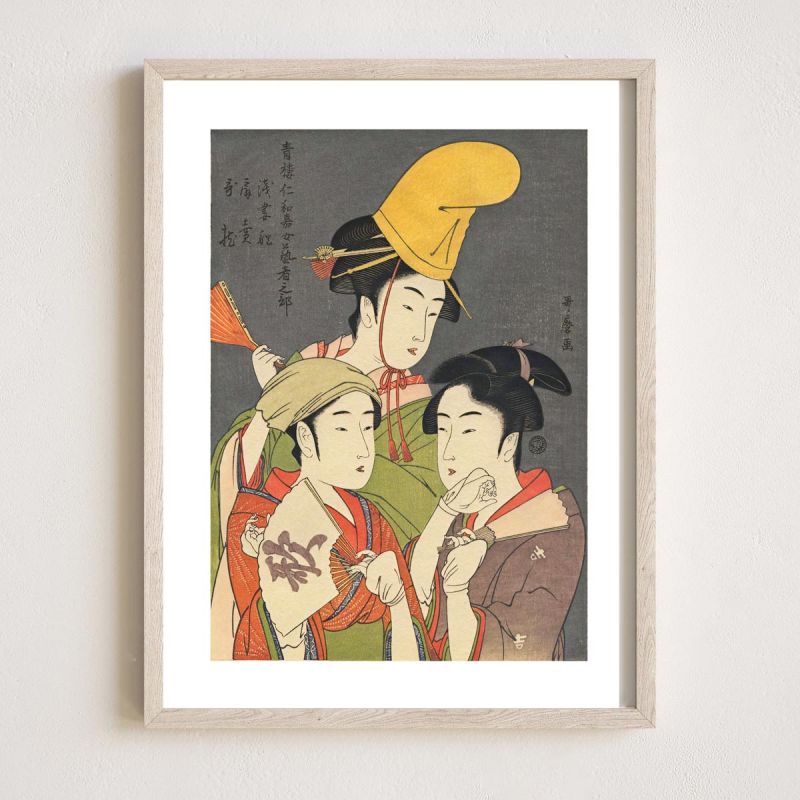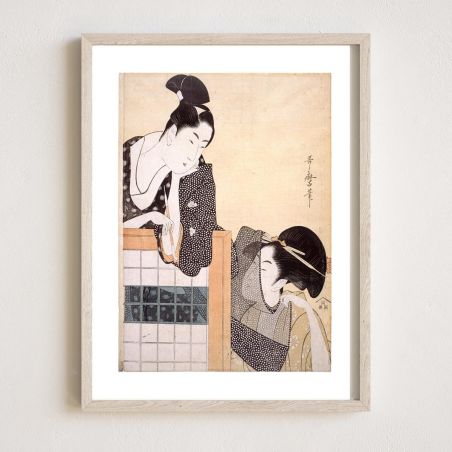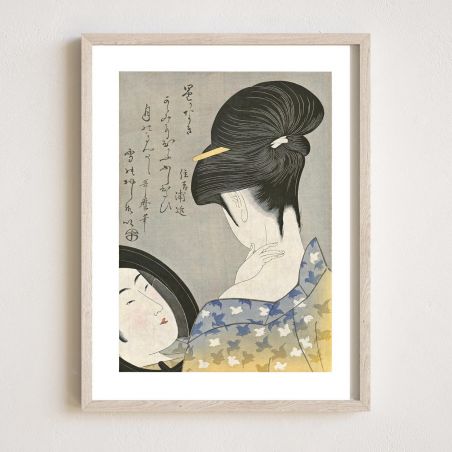Reproduction of Japanese print, UTAMARO, the 3 ladies

Kitagawa Utamaro, one of the greatest masters of Japanese woodblock prints, is renowned for his bijin-ga (美人画), an artistic genre focused on feminine beauty. Active during the Edo period in the 18th century, Utamaro captured the essence of elegance and grace of the women of his time, with a distinctive style characterized by fine lines, subtle use of color, and great attention to detail.
Brand:
PRODUCT SPECIFICATIONS
| width | 30 cm |
|---|---|
| length | 40 cm |
| Packing | Packaged in a rigid plastic sleeve - without frame |
| Product origin | Made in France |
| Dimensions | 30 x 40 cm |
| paper quality | Laid Paper 220G Light Ivory |
| Breeding type | art print |
Learn more
A typical Utamaro print often features a vertical composition and a close-up of a woman, focusing on her face and hands, which convey a great deal of expressiveness. The hair is delicately arranged in sophisticated chignons, adorned with combs and hairpins that add texture and detail to the piece. Facial expressions, though subtle, convey emotional depth. Half-closed eyes, a lowered or pensive gaze, slightly parted lips… every detail seems to reflect a rich inner life, a moment of reverie or contemplation, which adds a human dimension to these idealized figures.
Utamaro’s use of color is also remarkable. He favors soft and refined tones such as shades of pink, ochre, gray, and blue, without excessive saturation, allowing each print to maintain a subtle elegance. In the background, the decor is often minimalist, with elements like screens or stylized floral motifs, placing the central focus on the female figure and enhancing the feeling of intimacy.
Utamaro’s prints are not only aesthetic representations; they also offer a valuable glimpse into the culture of the Edo period, particularly the beauty ideals, fashion trends, and popular accessories in the pleasure quarters. They also showcase the diversity of expressions and roles of women in Japanese society at the time, notably geishas, courtesans, and common women.
SHIPPING AND RETURNS
Delivery times:
- 1 to 3 business days for France, Belgium, and Switzerland.
- 3 to 5 business days for other European countries.
- 3 to 5 business days for other countries via DHL.
This item is shipped from our warehouse in France.
You can return or exchange an item within 14 days of receiving your order. For more information, please consult our Return Policy.

.jpg)
























































































